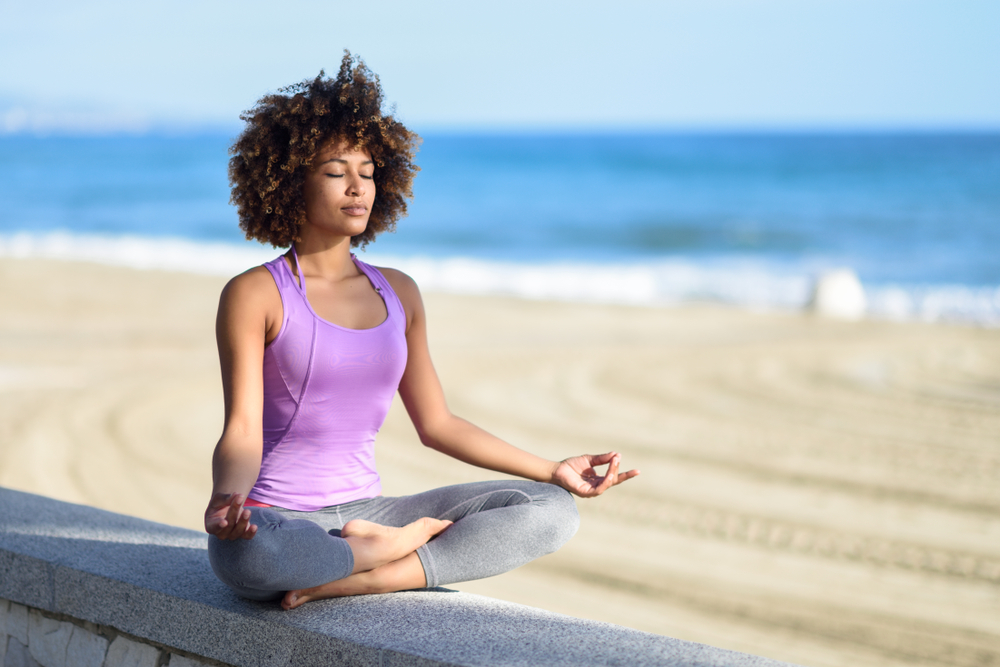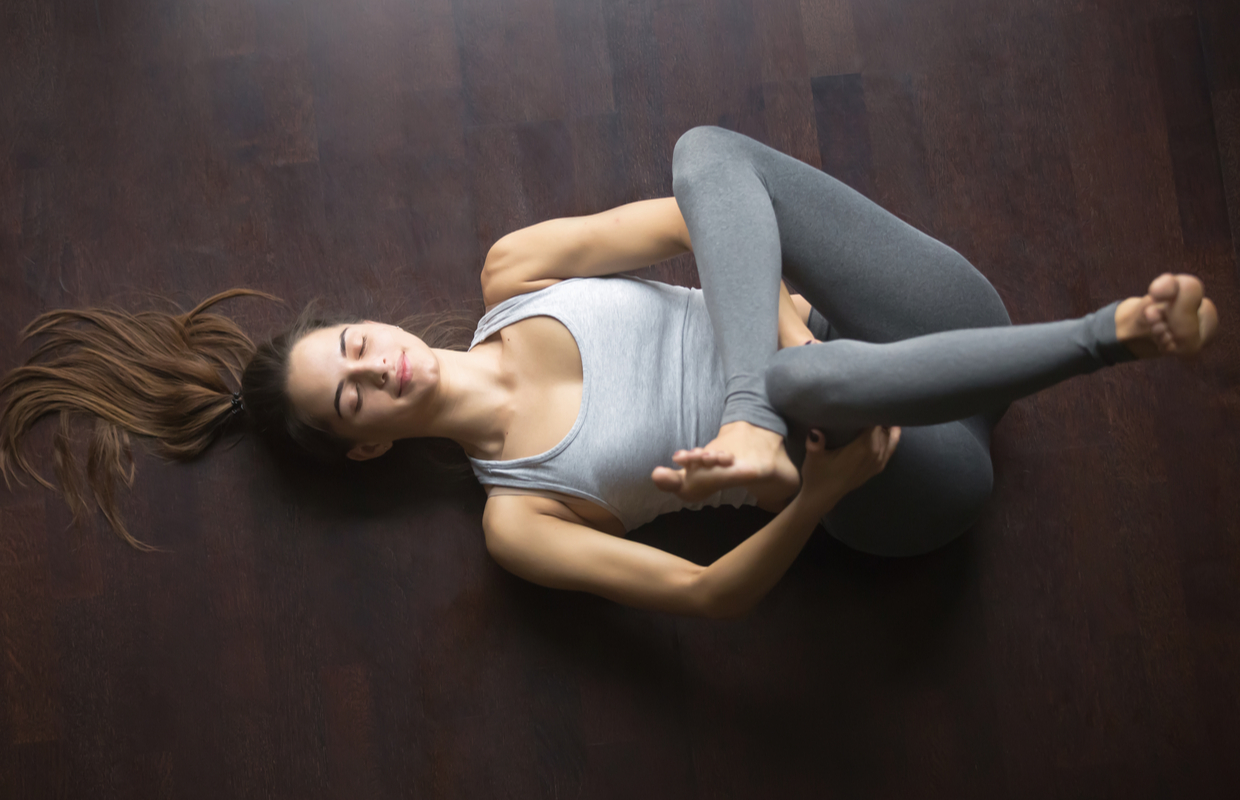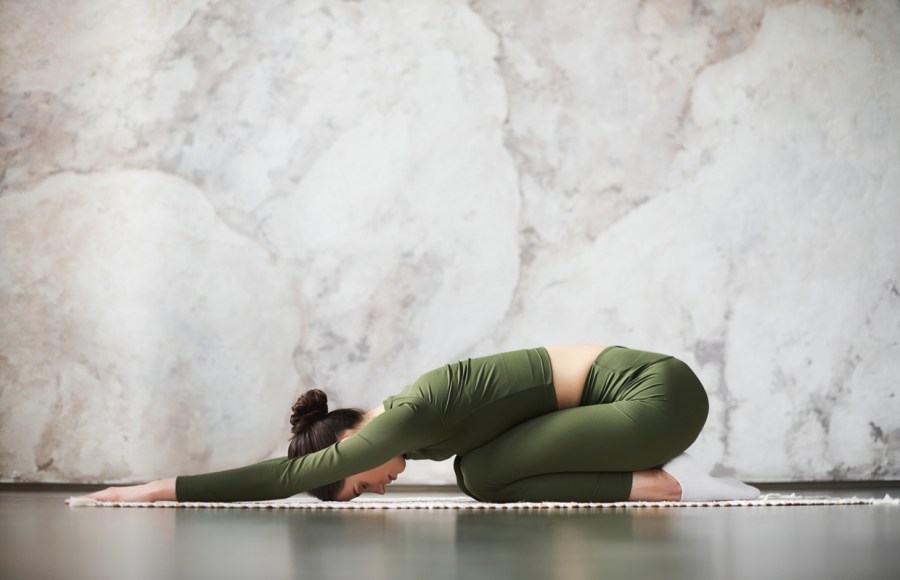Learn how to ease the painful and frustrating symptoms of PMS naturally with these yoga poses and exercises…
By Eve Boggenpoel
Tearfulness, cramps, a dull, aching sensation in the lower back – we’ve all been there. In fact, as many as 80 per cent of women experience PMS and menstrual pain, according to some reports. And while curling up on the sofa with a good book or boxset sometimes does the trick, there are other ways to manage your menstrual discomfort.
Indeed, a study in the International Journal of Environmental Research and Public Health found that, after 12 weeks of yoga, participants had fewer cramps, reduced pain and needed fewer painkillers. They also experienced significantly less breast tenderness, abdominal swelling and cold sweats, and had more energy to boot.
Yoga for the different menstrual cycle phases
As well as using specific poses to relieve symptoms, you could also adjust your practice style according to the phase of your cycle. Premenstrually and while you’re bleeding, yin and restorative yoga, with their long-held seated and lying poses, can help balance your emotions and ease physical tension.
After this, your energy levels will pick up, so you might enjoy more active styles such as vinyasa and Iyengar. Your energy is likely to be highest around ovulation, making it a good time to practise more demanding styles such as astanga or hot yoga.
Best yoga exercises to ease emotional PMS symptoms
For some people, the days before your period can feel like an emotional roller coaster. Try these exercises to reduce these PMS symptoms…

Daily breathing and meditation
Keep things on a more even keel with daily breathing practices and meditation (see ekhartyoga.com for inspiration).
Try standing poses to encourage downward-moving energy
From a yogic point of view, your period is associated with apana, or downward-moving energy, but if your energy is moving upwards (prana) – for example, if you are thinking a lot and not in touch with your lower body – you’re more likely to experience premenstrual headaches.
Keep your energy in a downward flow by connecting to your feet more – on the mat, focus on standing poses, such as mountain pose, warrior II and extended side angle pose; off the mat, be aware of the sensations in your feet as they touch the ground with every step.
Best yoga poses to reduce physical PMS symptoms
While the arrival of your period can often feel a relief, cramping stomach pains can blight the first few days.

Caused by hormone-like substances called prostaglandins, which are responsible for pain and inflammatory responses, they instruct your uterus to shed the womb lining when it’s not needed for pregnancy.
Although you’re most likely to feel cramps in your lower abdomen, the pain can also spread to your lower back and thighs. Try out these yoga poses to ease painful PMS symptoms…
Forward bends (e.g. child’s pose)
One of the best poses to release tension and open your lower back while menstruating is child’s pose – try it with wide legs over a bolster or pillow, or keep your legs closer together and let your thighs support your abdomen.
Other forward bends, folding over a bolster, will also help (try seated variations with legs wide, or one leg straight and the other with your heel folded into the groin).
Reclining pigeon
Reclining pigeon will help release tension that has built up in the hips, belly and lower back during your period. Rest your forehead on folded arms over a blanket or pillow. If needed, raise the hip of your straight leg onto a block to prevent accumulating extra tension in the area.
Reclining butterfly
Reclining butterfly is another super-restorative pose that will help release tension in your belly. Use lots of blankets and bolsters to support your knees, back and head. If you have a sandbag, place that over your feet to feel even more grounded and relaxed.
You can remain in these restorative poses for five to 15 minutes, as long as they are comfortable for you.
Use yoga breathing techniques to ease PMS symptoms
Finally, remember to use your breath both on and off the mat to help manage pain levels. Direct a long, slow breath to the area where you feel the strongest sensations, then release any muscular tension on the out-breath.
Spend several minutes working with your breath until the sensations diminish, or your relationship to the pain changes.








